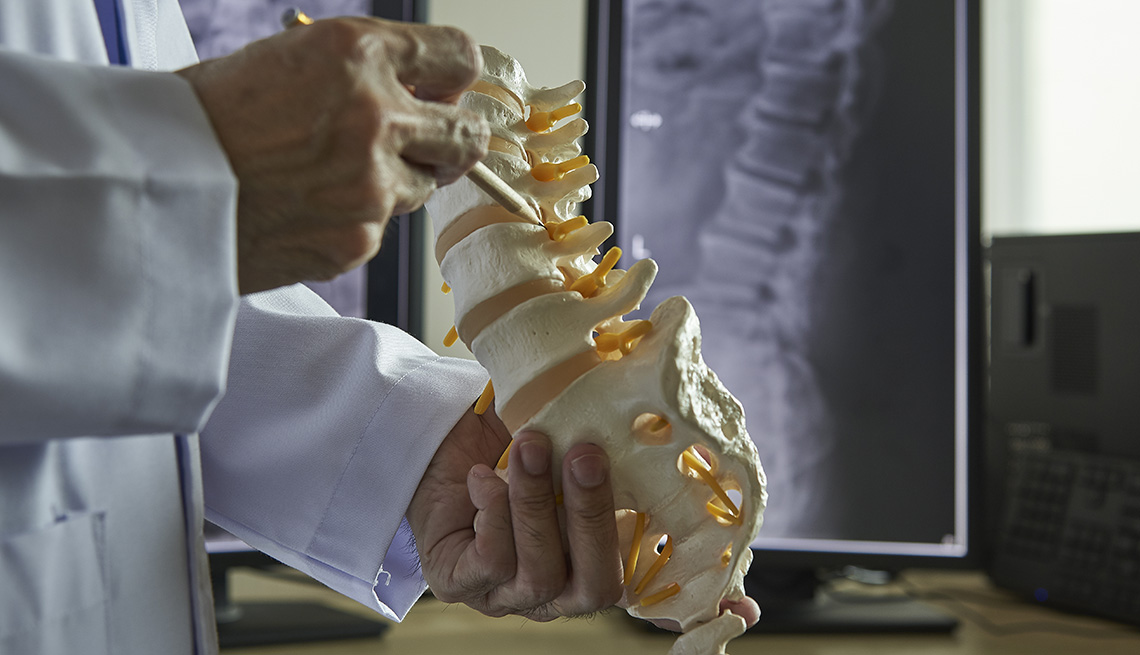
Should you have kyphoplasty to treat a spinal fracture?
- Select a language for the TTS:
- UK English Female
- UK English Male
- US English Female
- US English Male
- Australian Female
- Australian Male
- Language selected: (auto detect) - EN
Play all audios:

While kyphoplasty patients can have complications, including cement leakage or spinal cord damage, these are rare. FOR EXPERT TIPS TO HELP FEEL YOUR BEST, GET AARP’S MONTHLY HEALTH
NEWSLETTER. The alternative to newer kyphoplasty procedures is good old natural healing, with a period of bed rest from three days to a couple of weeks, followed by avoiding nearly all
physical activity for many weeks thereafter — all in order to immobilize the back to allow the broken vertebral bone to heal. Doctors also advise wearing a brace to restrict movement, along
with taking often high doses of pain medication. "A lot of people say, ‘Oh, how can you not treat a spinal fracture?'” Kallmes says. “But, really putting someone on bed rest is
like putting an arm in a sling for a fracture of the arm.” That said, natural healing has its drawbacks, too, which include possible negative effects of pain medication and the loss of
muscle or function that comes with so much time spent not moving. Doctors also report that patients find braces highly uncomfortable. If you've fractured a vertebra, whether you've
chosen natural healing or kyphoplasty, the risk for future spinal compression remains high. Some studies suggest the hardened bone cement injected during a kyphoplasty increases the strain
on adjacent vertebrae, leading to an even higher fracture risk. As a result, following any vertebral fracture treatment, Kallmes says that “being treated for their osteoporosis, that's
the absolute, number 1 most important thing." While you'll need to see a doctor to do so, such treatment often involves upping your calcium intake through diet or supplements, and,
possibly, going on medication to slow bone loss. Specific exercise to build bone and strengthen muscles involved in balance (while protecting the site of any previous fracture) is also key.
Another simple, yet effective way to prevent subsequent spinal fractures? Avoid bending, especially to pick up or lift something. “Every time you bend forward, there's more pressure
put on the front part of the bones [in the spine],” notes Matthew Drake, M.D., an endocrinologist with the Mayo Clinic. “If you have enough of that pressure and you have a bone that's
not as strong, that vertebra can basically just crush a little bit.”
